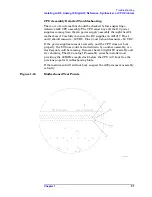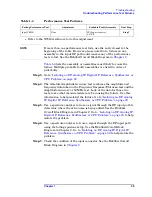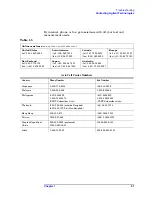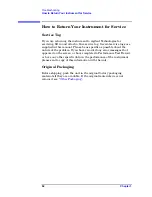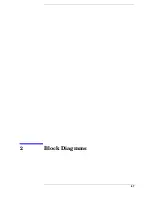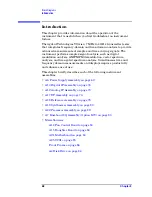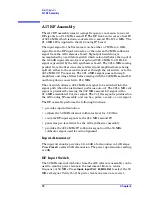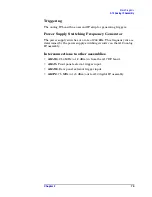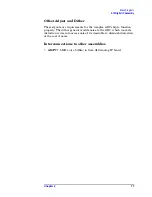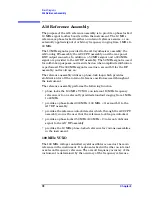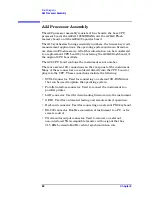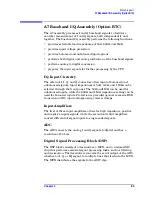
70
Chapter 2
Block Diagrams
A17 RF Assembly
A17 RF Assembly
The A17 RF assembly uses two-stage frequency conversion to convert
RF signals to a 21.4 MHz second IF. The RF front-end creates a first IF
of 321.4 MHz which is down-converted to a second IF of 21.4 MHz. The
21.4 MHz IF is applied to the A12 analog IF board.
The input signal to the first mixer can be either a 7 MHz to 4 GHz
signal from the RF input connector, or the internal 50 MHz calibrator
signal from the A18 reference board. Signal path switching is
accomplished by a solid state switch which is located before the input of
the 0-40 dB input attenuator. A step-tuned 328.4 MHz to 4 GHz LO
signal is provided by the A19 synthesizer board. The 321.4 MHz mixing
product from the first converter is filtered and amplified before being
split off, either to the second converter through the cal switch, or to the
321.4 MHz OUT connector. The 321.4 MHz signal passes through
amplifiers and image filters before mixing with the 300 MHz second LO
and being down converted to 21.4 MHz
The cal switch allows a 321.4 MHz cal signal to be switched into the
signal path when the instrument performs auto-cal. The 321.4 MHz cal
signal is produced by mixing the 300 MHz second LO signal with a
21.4 MHz modulated Cal_Osc signal. The Cal_Osc signal is produced on
the A12 analog IF assembly, and can be a pulse, a comb, or a cw signal.
The RF assembly performs the following functions:
• provides input attenuation
• adjusts the 50 MHz internal calibrator level for
−
32 dBm
• converts RF input signals to the 21.4 MHz second IF
• generates pre-level drive for the A19 synthesizer assembly
• provides the 321.4 MHz IF calibrator signal and the 50 MHz
calibrator signal used for auto-alignment
Input Attenuator
The input attenuator provides 0 to 40 dB of attenuation in 1 dB steps.
Press
Preset
to select 0 dB attenuation. The power up attenuator setting
is 0 dB.
RF Input Switch
The 50 MHz internal calibrator from the A18 reference assembly can be
used to monitor power levels in the instrument. Enter a center
frequency of 50 MHz. Press
Input,
Input Port
,
50 MHz Ref
to select the 50
MHz cal signal. Verify that the power levels on screen are correct.
Summary of Contents for E4406A VSA Series
Page 4: ...4 ...
Page 10: ...10 Contents ...
Page 11: ...11 1 Troubleshooting ...
Page 66: ...66 Chapter1 Troubleshooting How to Return Your Instrument for Service ...
Page 67: ...67 2 Block Diagrams ...
Page 119: ...Chapter 2 119 Block Diagrams Block Diagrams Block Diagrams ...
Page 120: ...120 Chapter2 Block Diagrams Block Diagrams ...
Page 122: ...122 Chapter2 Block Diagrams Block Diagrams ...
Page 124: ...124 Chapter2 Block Diagrams Block Diagrams ...
Page 125: ...125 3 Parts List ...
Page 164: ...164 Chapter3 Parts List Hardware ...
Page 165: ...165 4 Assembly Replacement ...
Page 169: ......
Page 170: ...170 Chapter4 Assembly Replacement Removal and Replacement Procedures ...
Page 227: ...Chapter 4 227 Assembly Replacement Front Frame Subassemblies Figure 4 39 Keypad Parts ...
Page 231: ...231 5 Post Repair Procedures ...
Page 262: ...262 Chapter5 Post Repair Procedures Automated Adjustments ...


